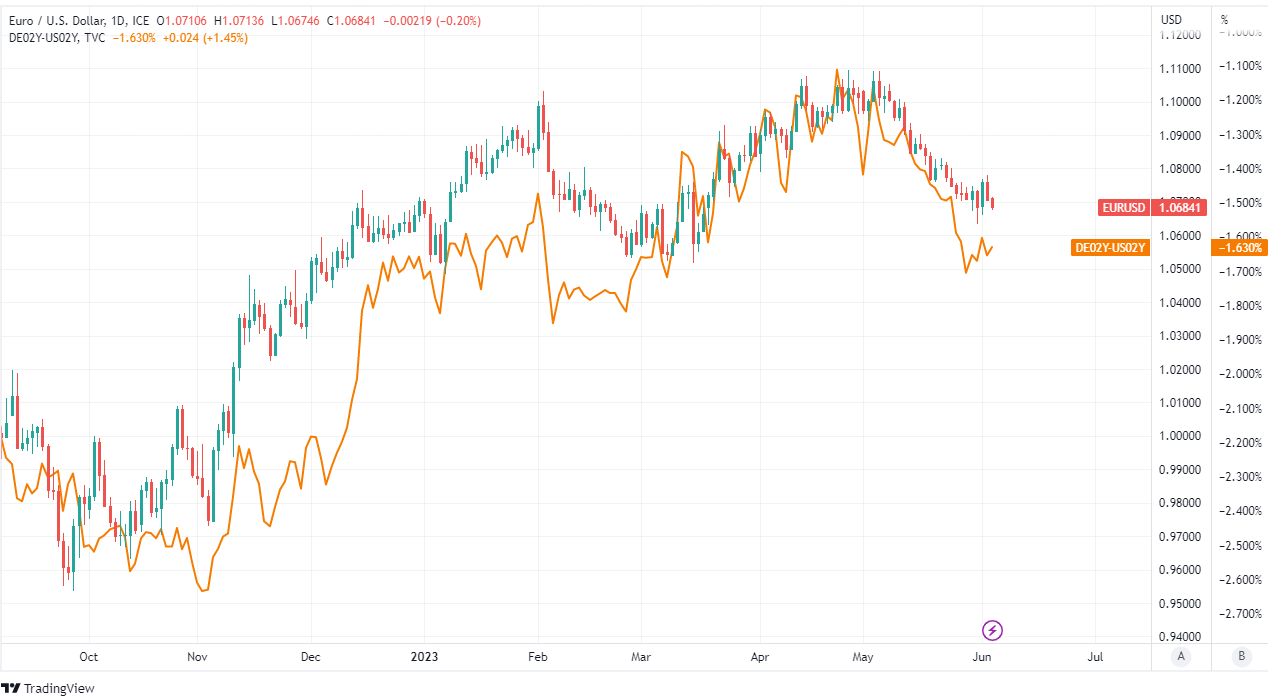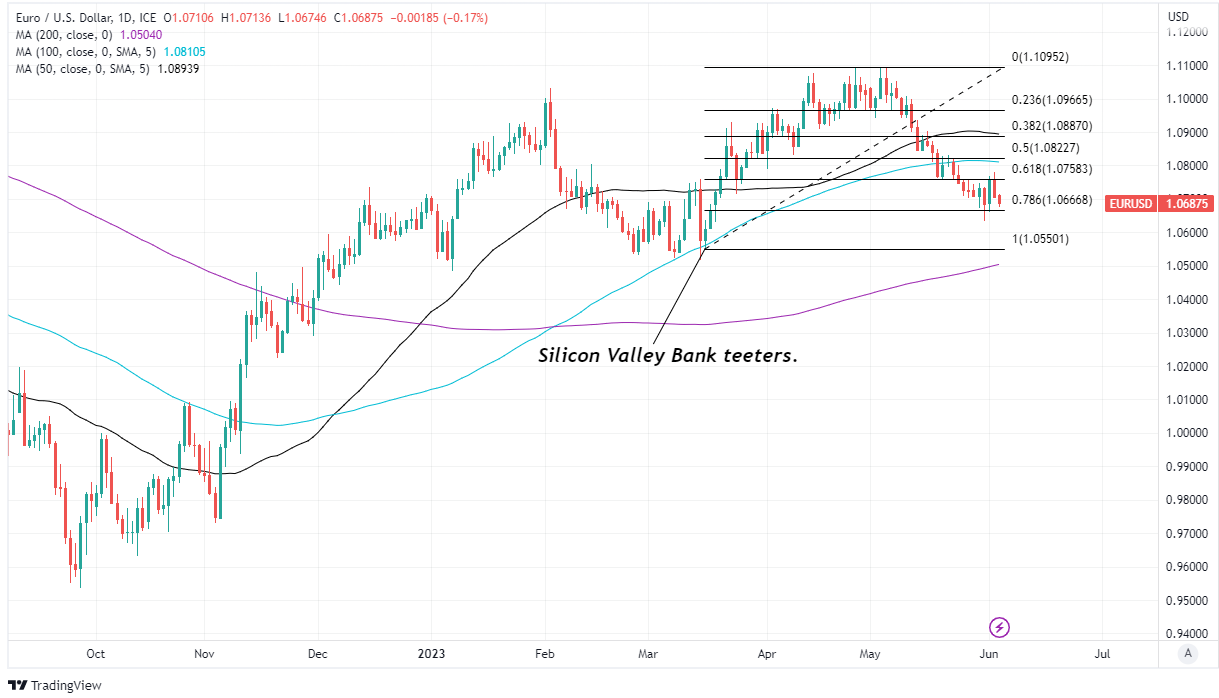EUR/USD Week Ahead Forecast: Carving Out Bottom on Charts
- EUR/USD remains under pressure near three-month lows
- Scope to bottom out if support holds near 1.0660 on chart
- But U.S. bond markets & yield differentials key short-term

© Adobe Stock
The Euro to Dollar exchange rate entered the new week near a three-month low but could bottom out on the charts this week if the bilateral interest rate differential stabilises and the single currency succeeds in holding above nearby technical support over the coming days.
Europe's single currency fell from one-year highs against the Dollar in early May to three-month lows around 1.0640 last Wednesday when softening German inflation figures led local bond markets to rally and placed further pressure on an already-falling yield differential.
Yield differentials have pulled the Euro lower throughout the recent month amid a hawkish investor reappraisal of the Federal Reserve (Fed) interest rate outlook but they might now have fallen about as far as they're likely to and could even have scope to recover in the single currency's favour up ahead.
"A potential halt in the rebound in USD short-term swap rates means that the two-year EUR-USD swap rate gap may also find some respite after having collapsed from -62bp to -116bp in the past four weeks," says Francesco Pesole, an FX strategist at ING.
"We feel that EUR/USD could find some support around 1.0650/1.0700 and even stage a rebound back to 1.0800/1.0850 this week," Pesole writes in Monday market commentary.
Above: Euro to Dollar rate shown at daily intervals alongside spread or gap between 02-year German and U.S. government bond yield. Click image for closer inspection.
Friday's U.S> non-farm payrolls report for May offered reason for thinking the yield differential may be bottoming for revealing that robust job growth of 339k was accompanied last month by large numbers of layoffs.
This has made the labour market appear to be cooling, if not on the verge of cracking, and was the clearest indication yet of the Fed having success in its attempts to reduce demand for workers and dampen pay growth as part of its broader effort to ensure inflation returns to the 2% target.
"The danger here, then, is that the strong recent payrolls numbers will either be revised down when the numbers are benchmarked to social security records, and/or will turn suddenly south when the seasonal adjustments mean-revert," warns Ian Shepherdson, chief economist at Pantheon Macroeconomics.
If the U.S. job data marks the beginning of a trend then it could place a question mark over investor expectations for a further increase in the Fed's interest rate next month and potentially impact market pricing for eventual interest rate cuts with supportive implications for bond yield differentials and the Euro.
But in the meantime, the Euro is likely to take its cues from the Tuesday and Wednesday releases of European retail sales and German industrial production data for April, which are the highlights of the economic calendar ahead of next Tuesday's U.S. inflation report for May.
Above: Euro to Dollar rate shown at daily intervals with Fibonacci retracements of mid-March rally indicating possible areas of technical support for the Euro while selected moving averages denote prospective support and/or resistance.
"Euro area headline inflation is decelerating rapidly, in line with our below-consensus forecast in May, while core inflation is easing at a slower pace, and could re-accelerate temporarily in June and July," says Silvia Ardagna, chief Europe economist at Barclays.
"EC surveys point to downside risk to our lacklustre euro area growth forecast of 0.1% q/q in Q2. This, together with the ongoing deceleration of inflation and transmission of monetary policy, makes the end of the ECB tightening cycle in sight," Ardagna writes in a Friday research briefing.
Next week's U.S. inflation data will be pivotal to whether the Fed raises rates again any time soon but the European data will also be important for helping determine if the European Central Bank's once-negative deposit rate eventually reaches the 3.75% anticipated by markets for the months ahead.
"My intuition suggests that we have not reached the end of our rate-hike cycle, though we’re not far away from it," ECB executive board member Fabio Panetta told Le Monde in an interview published at the weekend.
"I think the policy debate will soon shift away from “how high?” to “how long?”. There is substantial scope for fighting inflation by keeping rates high for as long as necessary. We should be resolute yet judicious, with the aim of lowering inflation without unnecessarily harming economic activity," he added.


